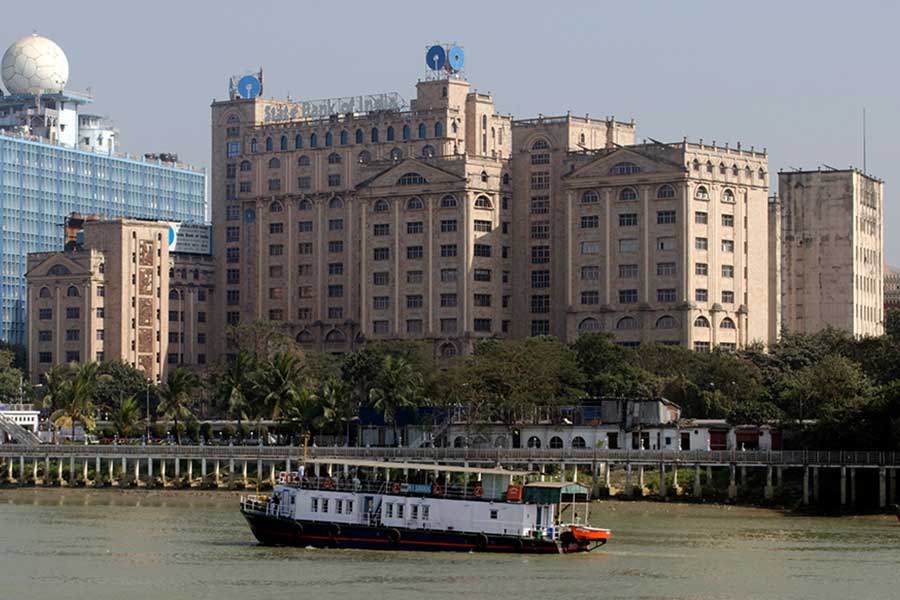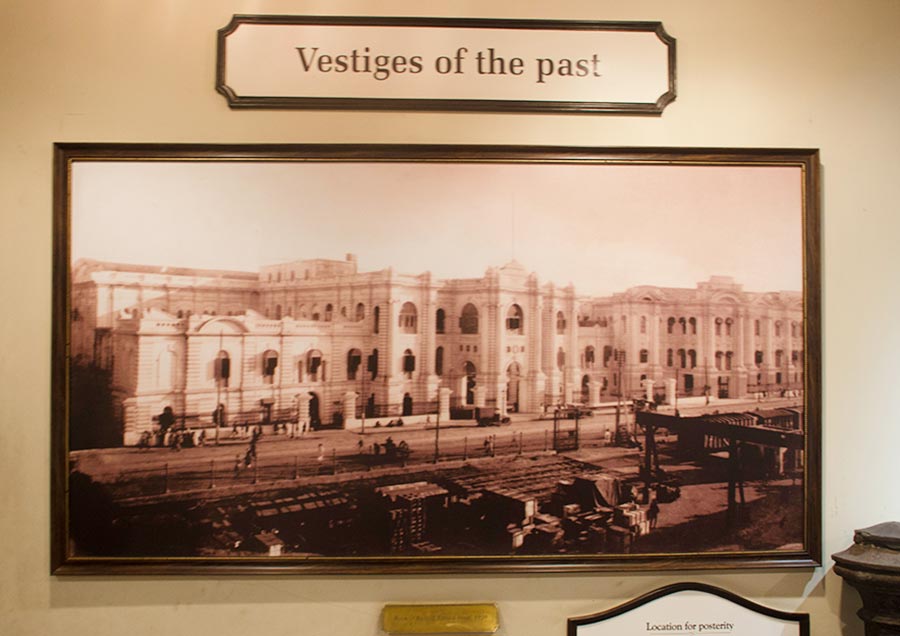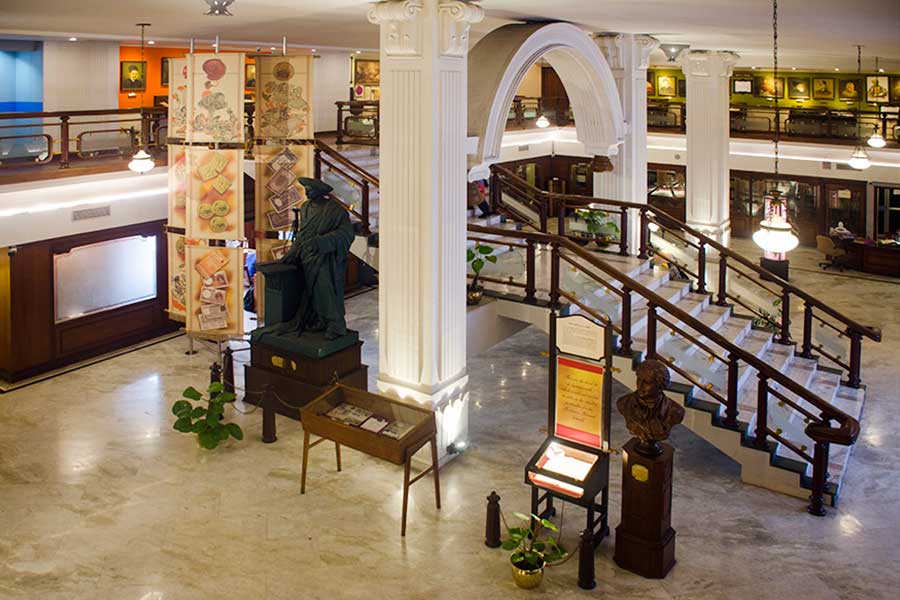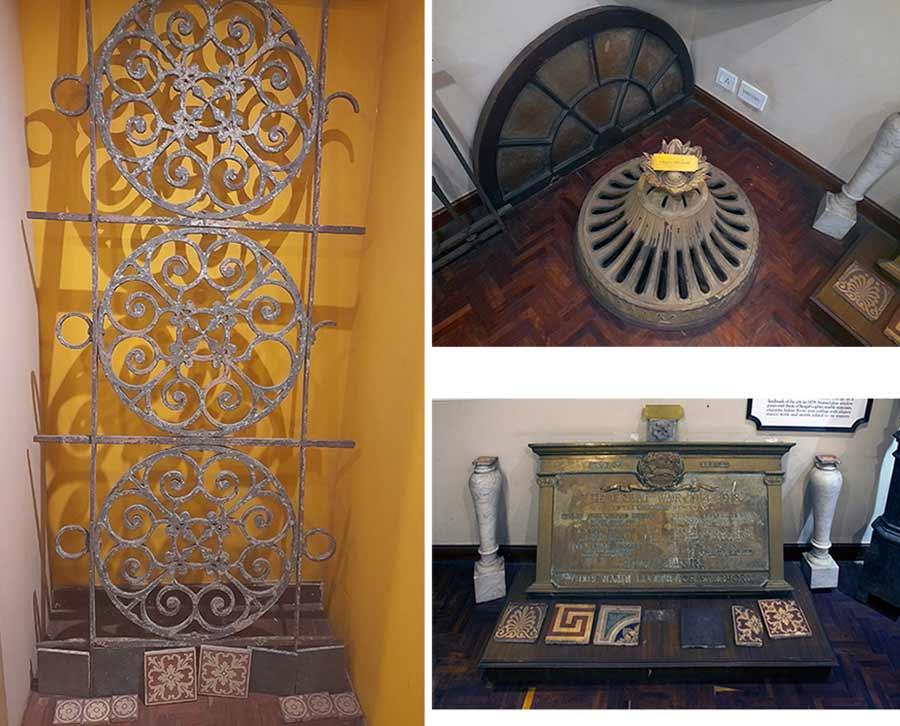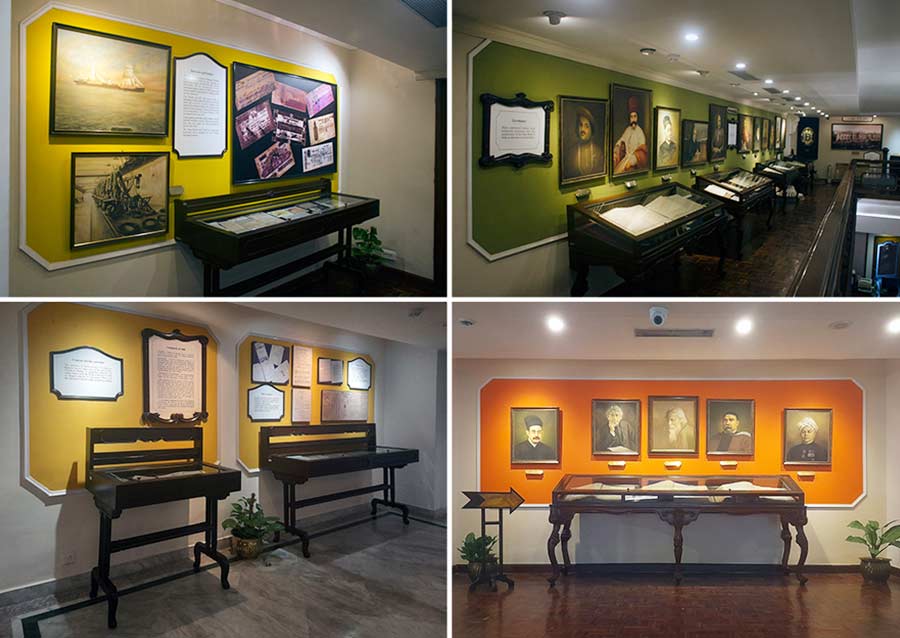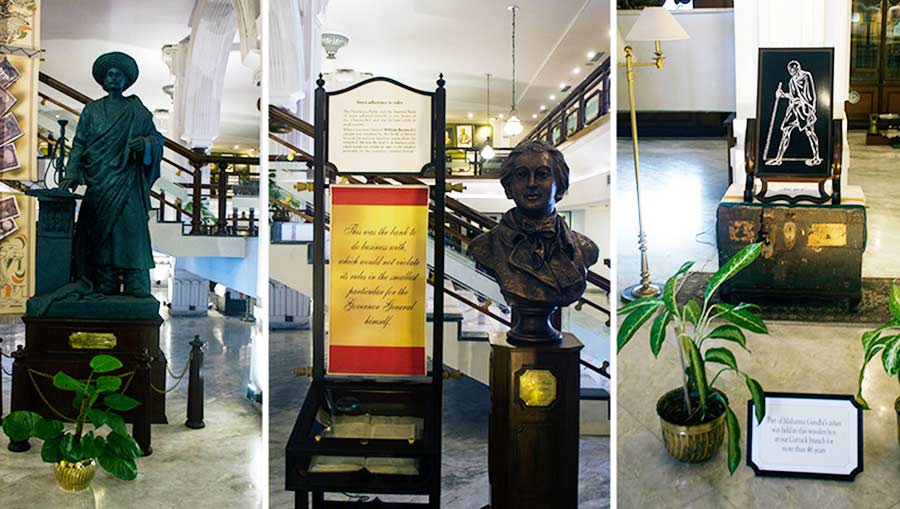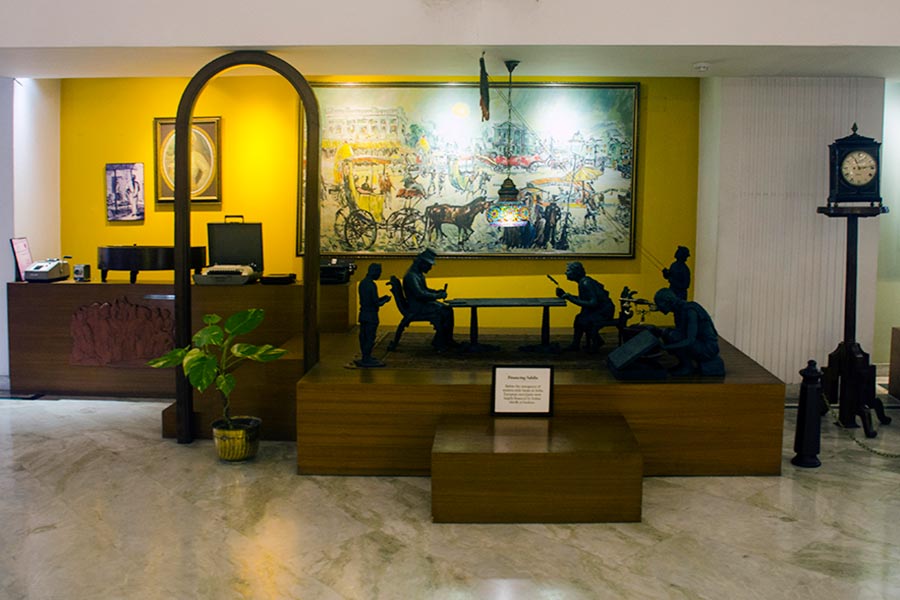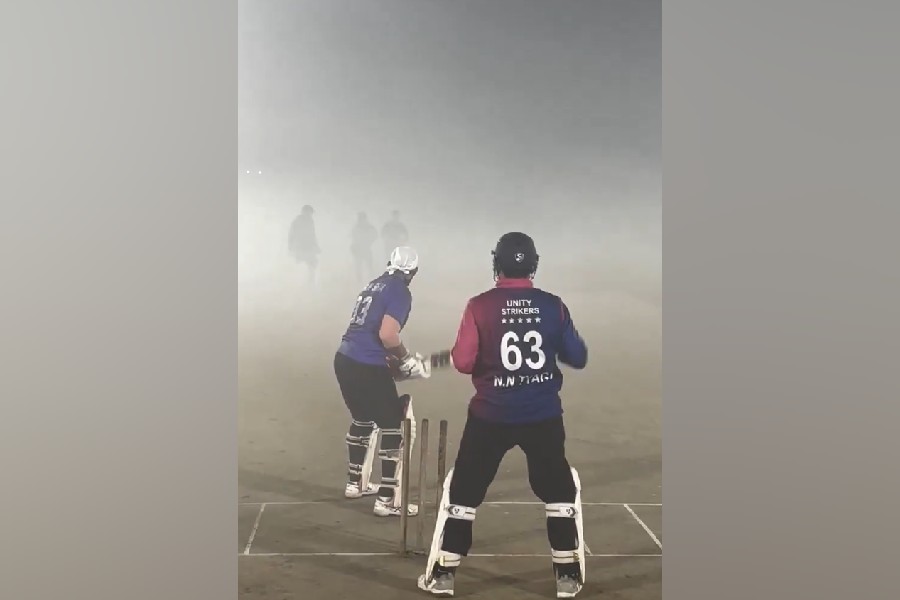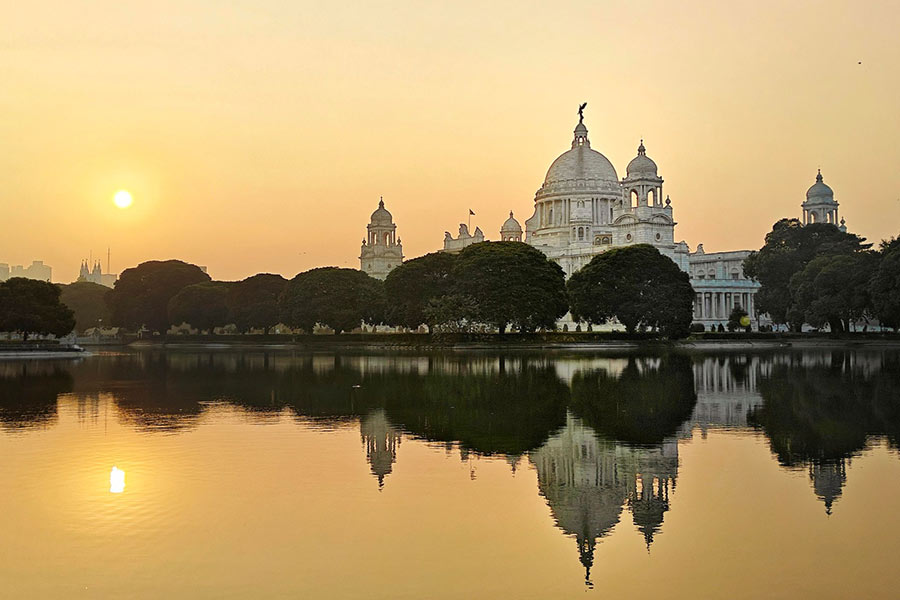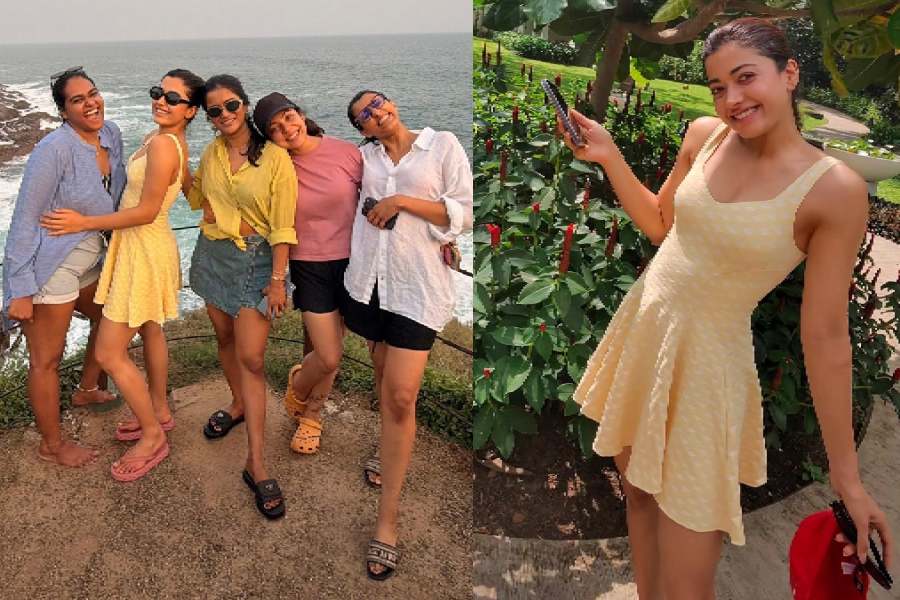History of the State Bank of India
The mighty office of the State Bank of India (SBI) on Strand Road (as seen in picture from the Hooghly) is a prominent landmark of the city’s skyscape. Officially known as the Samriddhi Bhavan, it will complete 25 years of service on January 31, 2025.
Although the building is only 25 years old, it is associated with an institution which dates back to 1806. On June 2, 1806, Bank of Calcutta, the earliest predecessor of State Bank of India, started its operations. In 1809, it was renamed Bank of Bengal.
In 1921, Bank of Bengal merged with Bank of Bombay (founded in 1840) and Madras (founded in 1843) to form the Imperial Bank of India. Later, in 1955, the Imperial Bank was nationalised to form the State Bank of India.
Days and timings
The SBI archive and museum is open on all banking days between 10am and 5pm. There is no entry fee. Photography is allowed. The picture above shows the stained glass logo of Bank of Bengal from the old building and (right) the painted glass logo of Bank of Bengal at the entry of the SBI Archive and Museum.
The previous offices
Since its inception, the bank operated from a modest rented premises, which was not far from the present-day location. In 1825, the bank moved from the modest rented premises to a grand building, which they could proudly call their own. The building, with its magnificent edifice, stood at 1, Strand Road. An architectural masterpiece, it served as the headquarters of Bank of Bengal, Imperial Bank of India and even the State Bank of India. As business grew, the bank fell short of space and in the late-1980s it was decided to replace the old building with a much larger modern structure. The operations of the old building were discontinued in 1991 and it was demolished.
Samriddhi Bhavan
After a decade, the new building came up at the same location. Known as Samriddhi Bhavan, the mighty building dominated the Kolkata skyline and towered above the Hooghly. Today, the Samriddhi Bhavan looks after the operations of State Bank branches across West Bengal, Sikkim and Andaman and Nicobar Islands. Apart from banking operations, the Samriddhi Bhavan houses an amazing museum and archive on its 11th floor.
State Bank of India Archive & Museum
The museum & archive came up on May 13, 2007, and houses an interesting collection of items, write-ups, photos, statues and paintings depicting the bank’s glorious history. The diverse collection of over 25,000 records primarily covers the history of the bank between 1806-1955. The museum comprises a large open space surrounded by balcony wrapping around the four sides. The balcony is approachable via a grand flight of stairs. The picture above shows relics from the old Bank of Bengal building.
Interesting exhibits of museum & archive
Some of the prominent exhibits of the museum and the archive can be listed as follows:
- Statue of Dwarkanath Tagore: A statue of Prince Dwarakanath Tagore, grandfather of Rabindranath Tagore is a prominent exhibit at the museum. Dwarakanath was a successful business man and a prominent figure in the early days of banking in India.
- Returned cheque of Lord William Bentinck: A cheque of William Bentinck, the then Governor-General of India, was dishonoured because his account was 4 annas (25 paisa) short. Bentick wrote a letter of appreciation to the bank. The check is displayed along with a bust of Bentinck.
- Box carrying the ashes of Mahatma Gandhi: A box held the ashes of Mahatma Gandhi in an SBI branch in Cuttack for 46 years. The box is now displayed along with a beautiful sketch of Gandhi.
- A photo and relics of the old building: The museum displays a photo of the old demolished building. Also on display are several relics from the old building. They included grills, motifs from walls & ceiling, broken tiles. They also include an old stained glass logo of Bank of Bengal and a plaque with the names of bank employees who died fighting the First World War.
- Swords, pistols, seals and trophies: A series of swords pistols are on display. The exhibits also include seals and trophies, which include the initial logo of SBI from 1955.
- Passbook of eminent personalities: Pass books and other banking documents of eminent personalities are also on display. These include the documents of Rabindranath Tagore, Jagadish Chandra Bose, Ishwar Chandra Vidyasagar, Jamsetji Tata to name a few. The documents are accompanied by beautiful portraits of the famous account holders.
- Complaint register from 1889: A complaint of an Indian account holder against a British bank officer makes an interesting read.
There are several other exhibits (in picture from left are statue of Prince Dwarkanath Tagore; bust of Lord William Bentinck and sketch of Mahatma Gandhi) narrating the history of the bank and its subsequent growth and modernisation. Everything is display with a series of photos, write-ups and even models (in picture below are models and paintings depicting the early days of banking).
All photographs by the author
